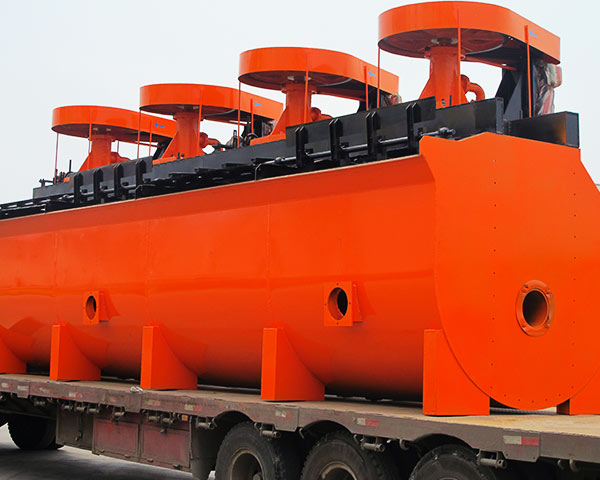The Inner Structure and Function of Flotation Cell:
This type of flotation cell is formed by a U-shaped trough, hollow shaft inflation and suspension stator and especially a new type impeller which is a cone impeller whose blades lean backwards just like a centrifugal pump wheel with height ratio rotary speed.
(1).jpg)
The Advantages and Benefits of Flotation Cell:
Flotation cell has the advantages of big blending quantity, small pressure, low energy consumption and simple structure. Inside the impeller chamber, there is a cylinderical air distributor with many holes so that the air will evenly distribute on the major parts of the impeller blades in advance, thus providing relatively big contact interface for pulp and air.
(1).jpg)
The structure of flotation machine: this machine is mainly composed of pulp chute, mixing device, air charging system, mineralized froth discharging device and electro motor.
(1) Pulp chute: It has pulp feeding mouth and the gate device used for adjusting the liquid level and it is mainly composed of mainly composed by the chute body which is melt by the steel board and gate melt by the steel board and steel rod.
(2) Mixing device: It is mainly used for mixing the pulp in order to prevent the mineral sand to deposit on the chute, and it is mainly composed by the belt wheel, impeller, vertical shaft and the impeller is made of the anti-abrasion rubber.
Mix the mashed rocks with water and necessary reagent in the mixing chute, and inject them to the pulp chute. Lead air to the pulp to make it form large quantities of froth, and some mineral particles that are difficult to get moist in water and that are generally called hydrophobic mineral particles will stick on the froth and float with the froth to the surface of the pulp to form mineralized froth layer, and some other mineral particles that are easy to get moist in water and that are called hydrophilic mineral particles do not stick on the froth but stay in the pulp to discharge the mineralized froth containing specific minerals, thus completing the separation process.
Technical data
Quick Way To Get Price
Note:For product inquiry or order requirements, Please fill the following form,
and we will contact you within one business day,
and all your information is kept confidential and is not shared with any third parties.

 30 seconds for connecting customer service
30 seconds for connecting customer service
 30 minutes for getting technical answer
30 minutes for getting technical answer
 24 hours for getting free solution plan
24 hours for getting free solution plan




(1).jpg)
(1).jpg)